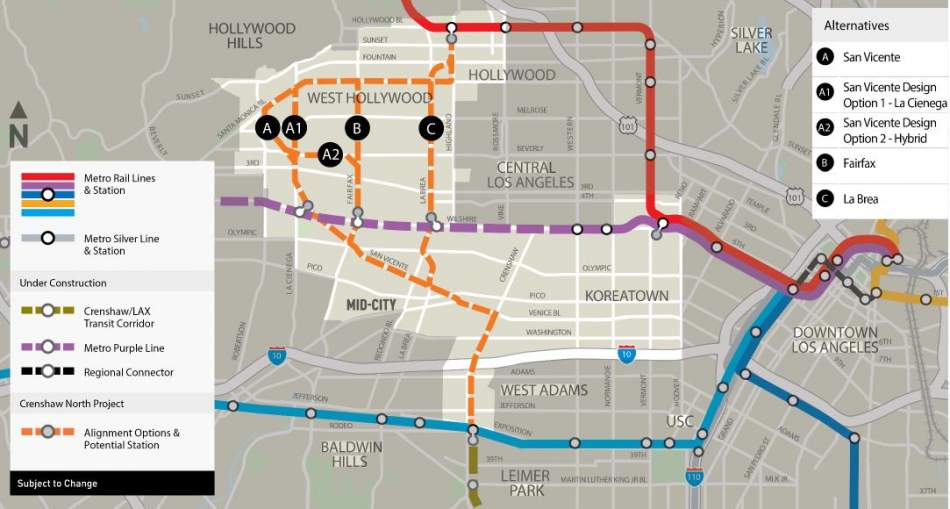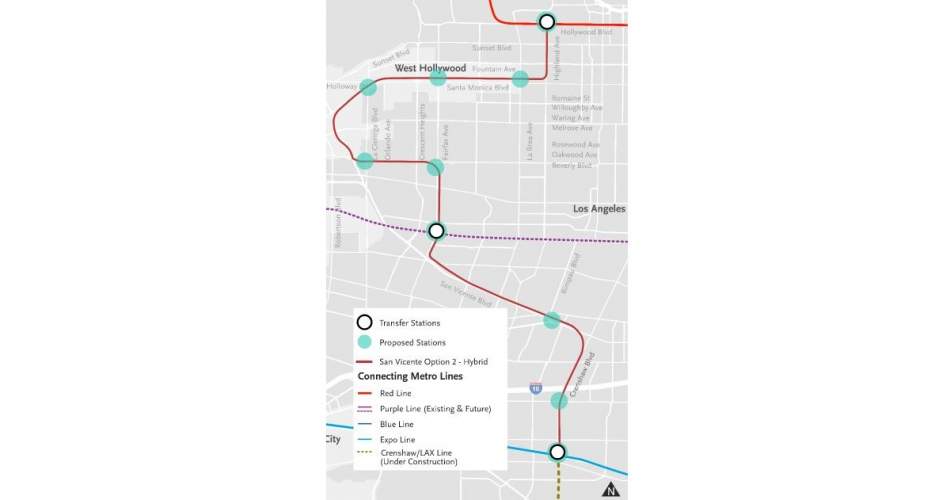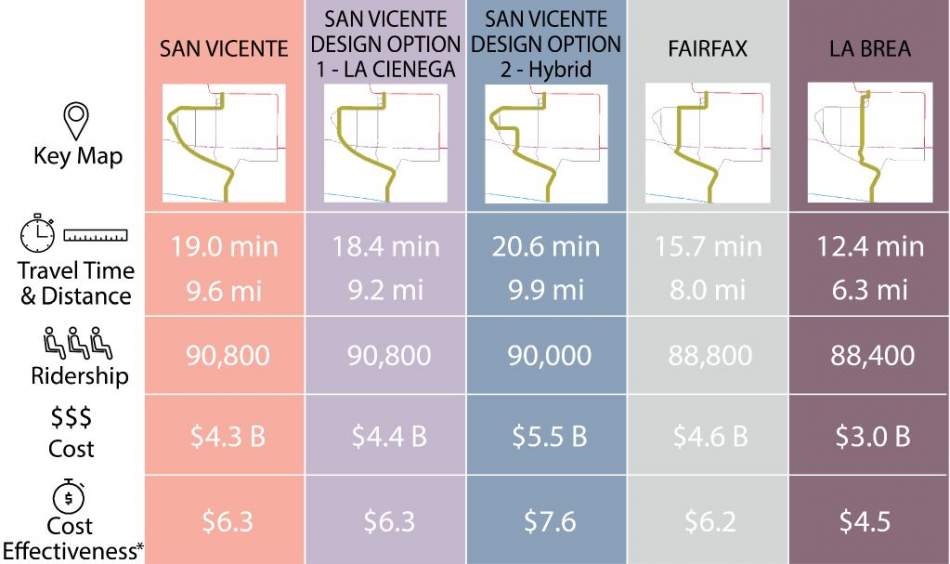The City of West Hollywood could contribute more than $1 billion to finance a northern extension of the Crenshaw/LAX light rail line, according to materials to be considered at the October 7 meeting of the West Hollywood City Council.
Currently, five alignments are being studied for the project, all of which proceed north from Expo/Crenshaw Station before veering west at Venice Boulevard and transitioning onto San Vicente Boulevard. From there, trains would travel north on either La Brea Avenue, Fairfax Avenue, or La Cienega Boulevard toward West Hollywood.
Following a series of community outreach meetings, Metro has dropped consideration of another potential alignment which called for the Crenshaw/LAX line to veer east toward Koreatown via Olympic Boulevard and Vermont Avenue.
Those same meetings have also resulted in the addition of a new "hybrid" alternative to the study, a combination of the Fairfax and San Vicente alternatives.
A project map shows the alignment traveling north on Fairfax after connecting with the Purple Line, then turning west at Beverly Boulevard. Trains would proceed to San Vicente Boulevard, before once again turning north, and eventually proceeding east on Santa Monica Boulevard toward Hollywood/Highland Station.
The estimate costs of the Crenshaw Line alternatives vary between $3 billion and $5.5 billion. End-to-end travel times range from as low as 12.4 minutes for the 6.3-mile La Brea alignment to as much as 20.6 minutes for the nearly 10-mile hybrid alternative. All five alternatives would attract approximately 90,000 weekday passengers, based on Metro's ridership forecasts.
According to a financial analysis conducted by HR&A, the City of West Hollywood could contribute up to $1.13 billion to finance the Crenshaw/LAX Line between the years 2020 and 2065. This includes:
- $48 million in Measure R and M local return funds;
- between $254 million and $447 million in revenue from a local sales tax increase (either .5% or .75%);
- between $49 million and $65 million from advertising near stations; and
- between $42 million and $573 million from a proposed enhanced infrastructure financing district (EIFD) within a .5-mile radius of the alignment.
HR&A also found that an EIFD with participation from the City of Los Angeles could generate between $800 million and $2.15 billion by collecting 50 percent of new growth in property tax receipts within a half mile of the proposed alignments.
Should the County of Los Angeles also participate in an EIFD, between $22 million and $500 million could be generated within the City of West Hollywood, and between $750 million and $2 billion within the City of Los Angeles.
Though delivery of the rail line is the impetus for the proposed EIFD, the district could also be used to provide a funding stream for affordable housing. HR&A estimates that the EIFD, depending on the alignment, could generate between $870 million and $1.14 billion for the development of supportive and low-income housing.
Should all three entities participate - including West Hollywood, Los Angeles, and the County - it is estimated than an EIFD could generate up to $5 billion in new revenues for the construction of the rail line and other uses.
West Hollywood has also proposed that $160 million in Measure M sub-regional equity funds should be used for the Crenshaw Line extension. This would complement approximately $2.24 billion in Measure M funds.
An EIFD with participation from all three entities, combined with anticipated Measure M returns and other local revenue sources, could generate nearly $8 billion versus an estimated project cost of $6.3 billion. This money could be supplemented through public-private partnerships, potentially through a joint development at the Division 7 bus yard site at Santa Monica and San Vicente Boulevards.
The provision of local funding - whether it is through the potential EIFD or other sources - is also expected to make the Crenshaw/LAX Line extension more competitive for state and federal grants, according to HR&A's analysis.
Finding new sources of funding is critical to accelerating the extension's construction, which is currently scheduled to break ground in 2041 according to the Measure M expenditure plan. Operations would not begin until 2047, based on that start date.
West Hollywood hopes to move the extension's opening date closer to 2028 - when the Summer Olympics will return to Los Angeles.








